The biggest problems are those we find closest to us. This applies to cities just as it does to people. The area between the streets Cejl and Francouzská is widely considered to be the most dangerous and the most problematic part of Brno. It is, in fact, a small area which one can cover on foot within just twenty minutes. Or thirty, if one walks really slowly. In our eyes, it has gradually become a major problem we refer to as the Brno Bronx. Many Roma live there and if you go there at night you may never walk again. Why do people think so? What are the local people like and why does this part of Brno host the Ghettofest festival? I sought answers from the co-organiser of the festival Alica Heráková.
I admit I don’t know where to start because there is so much to talk about. So I’ll start with the simplest of questions: what is Ghettofest and what is it good for?
It is a multi-genre cultural festival whose concept was conceived with regard to the specific attributes of the part of Brno known as the Bronx. It was conceived by people who live here or who are otherwise related to it. Their contribution to the festival is based on the fact that they feel good and safe here. The general perception is that it is a dangerous location that has turned into a ghetto. The purpose of this event is to prove, through first-hand experience, that it actually is not. And so we have come up with something that gives space to locals and, at the same time, attracts people from other parts of the city. It is not like the Khamoro festival which offers a purely Roma line-up. In the case of our festival, various genres and various types of people gather.
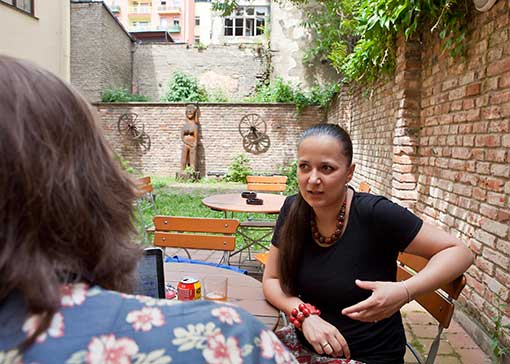 The area bordered by Bratislavská, Francouzská and Cejl streets is nicknamed the Brno Bronx. What’s behind this nickname?
The area bordered by Bratislavská, Francouzská and Cejl streets is nicknamed the Brno Bronx. What’s behind this nickname?
The most typical attribute of the area is that it is the “Sudetenland of Brno” of sorts. This area has seen, on several occasions, the departure of the local populace which defined the atmosphere of the area. First of all Jewish people, and then the German population after WWII. After WWII this area was settled, in an organised effort, by the Roma and now they are leaving. It is not violent deportation like their predecessors. It is a result of the process of gentrification. It means that the downtown Brno is expanding, this location is attractive to construction developers and socially disadvantaged classes have to move.
This has never been a richer part of the city…
It was the industrial outskirts of Brno. Of course you could find classier houses with large apartments but also apartments for the workforce or factories. After WWII the large apartments were divided into smaller ones so that they could accommodate as many Roma workers as possible. No, it has never been a nice neighbourhood. But its atmosphere is determined by the fact that the original inhabitants who originally created the atmosphere are no longer here. And one can tell. The local Roma mingle with a younger generation of newcomers who like lower rents or the specific multicultural spirit. Several decades have passed and the local populace is changing again.
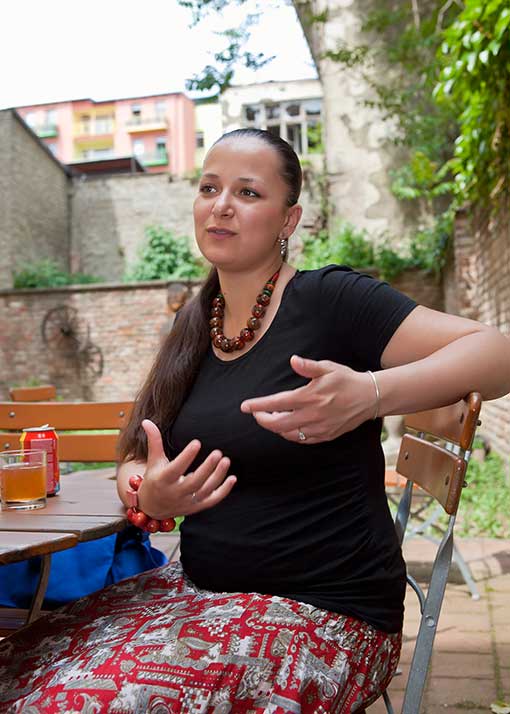 Ghettofest is not a festival for the support of the Roma. But whenever one mentions Cejl, Bratislavská or Francouzská (streets), most people immediately think of them. How is the focus of the festival on the coexistence of various communities and ethnic group reflected in the programme?
Ghettofest is not a festival for the support of the Roma. But whenever one mentions Cejl, Bratislavská or Francouzská (streets), most people immediately think of them. How is the focus of the festival on the coexistence of various communities and ethnic group reflected in the programme?
The programme is based on practical multiculturalism, because this neighbourhood is home to various groups that have to co-exist one way or the other. Initially, the coexistence between the majority and the Roma was strongly reflected in the programme as it is the most discussed public topic. The present day nature of the location is most affected by its most populous ethnic group, i.e. the Roma. We cooperate with the Museum of Roma Culture or with Roma artists. They are given the opportunity to present themselves and to interact with artists from the broader cultural contexts. Due to the increasing demand we have added a food festival to the programme. We would like to somehow address the international cuisine. We are negotiating with the representatives of various communities to invite them to bring and set up vending booths.
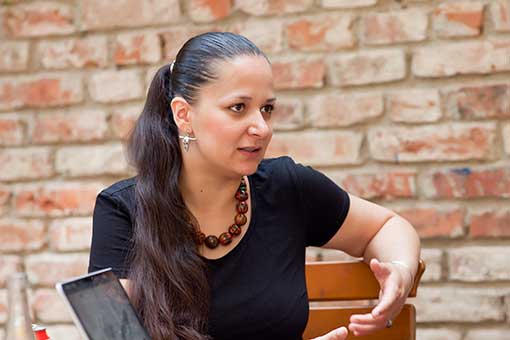 In the last population census, the Roma language was indicated as the native language by 40,000 people, while approximately 13,000 respondents identified their nationality as Roma. How come there are so many emotions around such a small number of people?
In the last population census, the Roma language was indicated as the native language by 40,000 people, while approximately 13,000 respondents identified their nationality as Roma. How come there are so many emotions around such a small number of people?
Any detailed explanation would require a separate interview. Basically this issue can be divided into several categories. Most Roma do not declare their nationality as such and they would indicate they were Czech nationality in the census. The Roma nationality is indicated by individuals who are not afraid to present it publicly, which many Roma are. It is mostly based on their general experience associated with the admission of their identity. Sooner or later they often suffer from the consequences of this admission. So that’s one thing – there are more Roma than the census data provided by them may suggest. Second, the issue of personal identity is a very specific and intimate matter and any generalisation is very tricky. I did indicate the Roma nationality but many people I know did not do the same, simply because it was not a key issue for them and they did not want to be classified as such.
Do you want to expand the festival so that it covers other less popular parts of the city? I am talking about certain parts of Husovice or Dornych…
The area that includes Bratislavská or Hvězdová, and simply the heart of this neighbourhood, poses certain advantages in terms of the production of the event. Plus it is a tradition. Many people will come here. We made one small exception this year; one event will take place at Svitavské nábřeží – namely the sporting activities on Sunday. We had to find space for the large stage because the traditional location, the Hvězdička park, is undergoing renovation. Eventually we decided to stay on the streets of the Bronx because of the convenient transportation. Plus it makes a lot of sense from the point of view of the festival. The expansion of the festival is limited by the fact that all members of the staff are volunteers who have certain limitations. We have recently decided to stretch the programme over several days. If it proves effective, we will be looking for more venues for next year. However, the outcome is a natural product of the people’s interest in being a part of it.
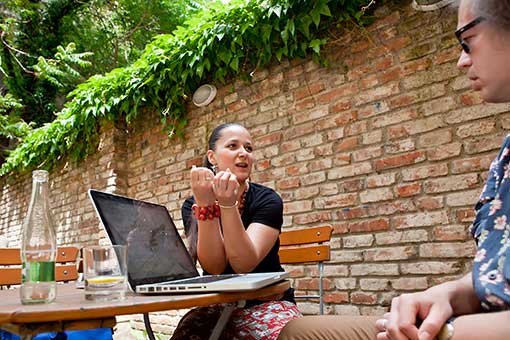 The purpose of Ghettofest is to open this location for one day and offer space for social encounters. What about the remaining 364 days of the year? Does the world outside mix with this world?
The purpose of Ghettofest is to open this location for one day and offer space for social encounters. What about the remaining 364 days of the year? Does the world outside mix with this world?
The world outside gets in through the gentrification process. This issue is addressed in the expert part of the festival which is strongly community-oriented. Apart from the conventional debate we will offer a seminar focused on community services. That plays a big role here. There are some traditional non-profit organisations specialised in social exclusion issues and in the provision of individualised services to particular clients – such as Podané ruce or NGO’s specialising in social services. Plus there are several initiatives which are provided a space within the framework of Ghettofest. These initiatives have their roots directly in this neighbourhood. One of them is Sdružení rodičů za férovou školu, which is an informal association of Roma mothers founded about a year ago. They have formed a choir and they will perform at the festival. It is an inside community activity. Other examples include the initiatives of young people who have come from the outside; they rent apartments here with the intention to do something about this place. These efforts include a project named Kreativní centrum in the former prison. So we can definitely see these efforts and the festival should serve as the showcase of these activities. The people who are interested in this location direct their efforts towards Ghettofest so that they can present their activities to the public.
So Ghettofest is a concentration of existing events and activities, it does not create a tailor-made programme?
The two go hand in hand. I live here, I work in the museum and I have certain ties to this place. And even my colleagues can offer a certain know-how and familiarity with this location. We try to use it to our advantage, which I think is the most important thing. Most of the programme created specifically for Ghettofest comes from outside. For example, we can invite 100°C (band) to perform and we have to pay them. We are going to invite all the dancers from Brno. So essentially the programme is a combination of both of these methods.
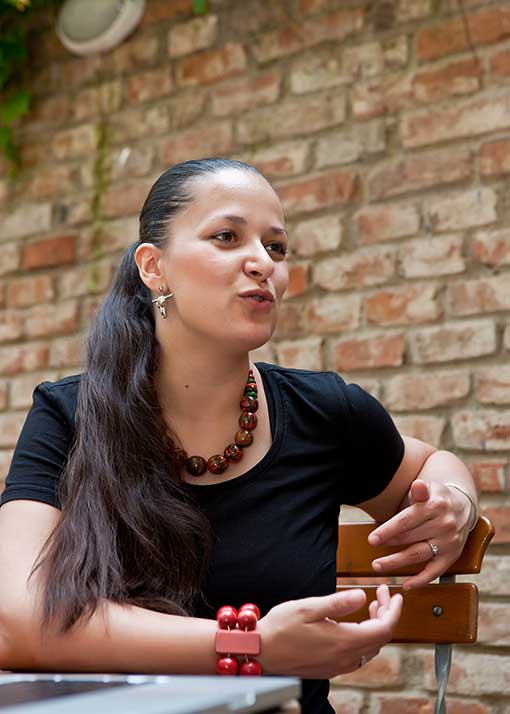 What would have to happen before people are able to pass through this neighbourhood on a normal day, for example on their way home to Černá Pole from an evening show at the Radost theatre, without the fear of getting robbed?
What would have to happen before people are able to pass through this neighbourhood on a normal day, for example on their way home to Černá Pole from an evening show at the Radost theatre, without the fear of getting robbed?
I think the “mindshift” is the most important thing. I have recently discussed it with Kamila Zlatušková who referred to it as “the ghetto in your head”. It is the feeling that I am entering a ghetto and I will be robbed on the first corner. So I start avoiding going there altogether. First of all, you need to convince yourself that it does not necessarily have to be like that. And second, Ghettofest gives people the opportunity to meet the Roma. We are creating some space that has been missing here. They spend a few hours together and they eventually realize that there is nothing to be afraid of. The fact that a group of Roma women is standing at a corner does not automatically mean any risk. This has been the main feeling – that a larger number of the Roma automatically means danger. You can get into trouble anywhere in downtown Brno and you have to be prepared if you want to be out at night. The ability to get rid of the preconception that “there is a group of the Roma, they are going to hurt me” is the main prerequisite for the change. I am a Roma myself and I see it differently, but all people who live here keep telling me that it is not a dangerous neighbourhood. It is not a ghetto and it is not the Bronx within the meaning of the French suburbs or a large U.S. city.
Yes, the comparison is ironic because there are 1.5 million inhabitants in the real Bronx...
When a group of artists from Germany came to visit me, one day we were walking down Cejl (street) at 10:30pm and the street was almost empty and silent. I told them it is the most dangerous street in Brno and they started laughing because their own experience with the most dangerous street was completely different. There are cities in the world where walking is strongly advised against, people use cars and bikes. Compared to that the atmosphere in Brno is completely different.
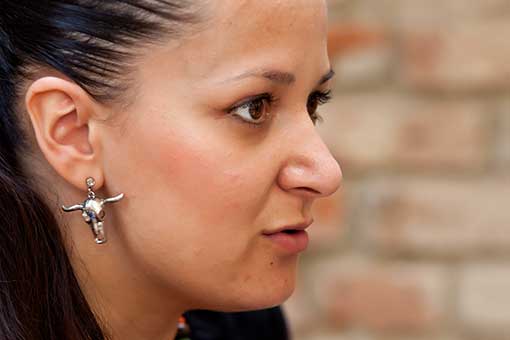 Life in this neighbourhood has always been specific. It was home to TetraHydroClub or, even earlier, Harlem that also alluded to an infamous part of NYC. It would appear this is a minor problem we are dealing with, but the allusion to the boroughs of NYC makes it more serious.
Life in this neighbourhood has always been specific. It was home to TetraHydroClub or, even earlier, Harlem that also alluded to an infamous part of NYC. It would appear this is a minor problem we are dealing with, but the allusion to the boroughs of NYC makes it more serious.
It is essentially a label. From the point of view of you and me, we can see it. But the point of view of people is different in the case of people who think they see bigger problems. Many people will cross the street if they see a group of Roma coming towards them. The reasons are totally irrational. It is a setting in their heads. As soon as I convince myself that I am somebody’s victim, the probability to actually become one is much bigger. However, this setting is very individual and specific and you cannot just convince people otherwise…
…you cannot just tell them “don’t think about it, don’t be afraid of the dentist, don’t be afraid of the Roma”.
Exactly. It is an individual process of self-realisation.
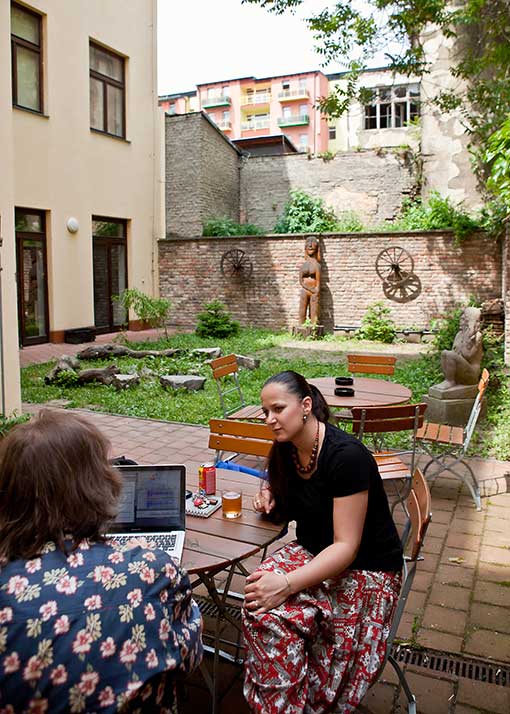 In terms of crime statistics, is it worse here than let’s say in Bohunice?
In terms of crime statistics, is it worse here than let’s say in Bohunice?
There is no easy answer because the location known as the Bronx belongs to two boroughs. Crime statistics are kept for boroughs. One of the boroughs begins at, and covers the area to the north of, Francouzská, while the other borough continues in the opposite direction. The crime statistics cannot be used considering the method of collection. That being said, the drug scene is much more active than in the Lesná neighbourhood (as every drug prevention specialist will tell you).
As long as there is no precise data, I will skip this and ask one more thing: what is the most positive and the most negative stereotype about the Roma?
The most positive stereotype is that “all Roma sing and dance”. Some time ago I met a girl, a 100% Roma with zero musical talent. I was really happy and I told her “We need more people like you. You will be a teacher, you will teach what you study, stay away from singing and dancing”. And the most negative stereotype is that the Roma are genetically crime-prone. Everyone who thinks so ought to come to the Museum of Roma Culture, and visit the permanent exhibitions where an old tale is told about the origins of this stereotype. It will be easily refuted.





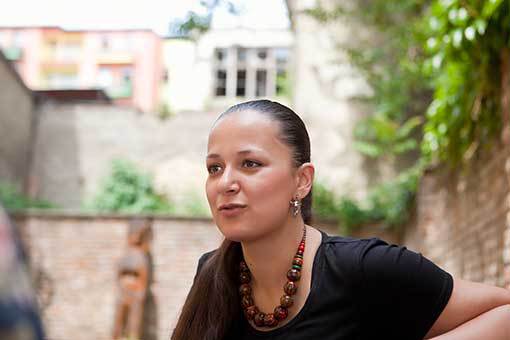


























No comment added yet..